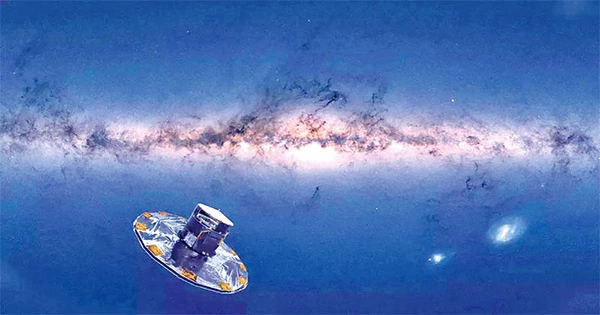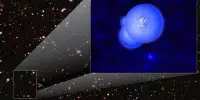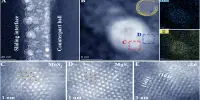The Gaia mission of the European Space Agency (ESA) is building the most precise map of our galaxy, the Milky Way, ever created. It gave the location, brightness, color, and proper motion of 1.8 billion stars in December 2020. The data has now been released in its whole by ESA, exposing a veritable treasure mine of observations from the Solar System to the furthest reaches of the universe. The categorization of 1.5 billion stars in our galaxy, which is followed by 50 different scientific studies, is included in the entire release, which may already teach us a lot about the objects in question.
However, Gaia went even further by providing a massive database of chemistry for millions of stars; a star’s spectrum of light tells us about its chemical components and can be used to calculate age, temperature, color, mass, metallicity, and the rate at which they move toward or away from us, among other things. Gaia was able to distinguish and track stars that did not develop in the Milky Way but were taken in during previous galaxy mergers, when our own galaxy snacked and cannibalized some of its countless galactic satellites, according to this characteristic.
In a statement, Dr Alejandra Recio-Blanco of the Observatoire de la Côte d’Azur in France, a member of the Gaia team, remarked, “Our galaxy is a wonderful melting pot of stars.” “This variety is critical because it teaches us about the creation of our galaxy. It exposes the dynamics of migration and accretion from other galaxies within our galaxy. It also plainly demonstrates that our Sun, like us, is part of an ever-changing system generated by the collision of stars and gas from many sources.”
With comprehensive observations of 813,000 binary stars and data of their position, distance, orbit, and mass, the expedition delivers the biggest catalog of binary stars yet. Not only that, but there’s more. Gaia keeps track of not just the movement of the stars, but also how they change inside themselves. It looked at the brightness variations of 10 million variable stars.
One of the most astonishing findings is that Gaia is so strong that it has been able to detect “starquakes” (movements on the surface of stars) for thousands of stars, something it was not built for. “We can learn a lot about stars from quakes, especially about their interior workings.” Conny Aerts of KU Leuven in Belgium, a member of the Gaia collaboration, remarked, “Gaia is opening a goldmine for ‘asteroseismology’ of huge stars.”
In this map, it’s not simply stars that “star.” Gaia created a 3 million pixel map of the Milky Way dust using the light of 470 million stars. It has also tracked 156,000 asteroids close to Earth, all the way out beyond Neptune’s orbit, as well as 31 moons of the major planets and Mars. It found 1.9 million quasars and 2.9 million galaxies beyond our galaxy. “Gaia is a survey mission, unlike previous missions that target specific objects. Gaia is sure to produce findings that other more devoted missions would overlook when studying the entire sky with billions of stars numerous times,” stated Dr Timo Prusti, Gaia’s Project Scientist at ESA.
“This is one of its strengths, and we can’t wait for the astronomy community to dig into our new data to learn even more about our galaxy and its surrounds than we ever dreamed of.” Typically, the mission will conclude with the fourth and final data release, which will further refine all of these observations. However, a two-year extension is possible, with a fifth data release expected no earlier than 2027.
















